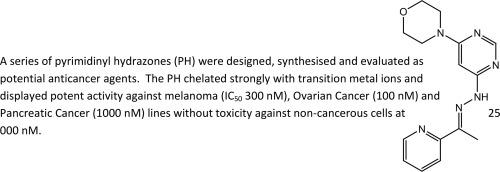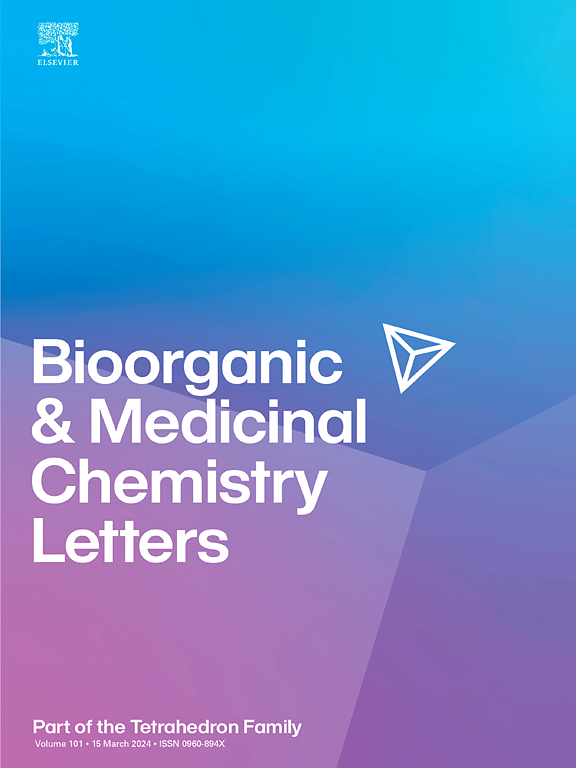The Pyrimidinyl Hydrazones: Selective for anti-Cancer cytotoxicity
IF 2.2
4区 医学
Q3 CHEMISTRY, MEDICINAL
引用次数: 0
Abstract
Pyrimidinyl hydrazones (PH) can be prepared using simple procedures beginning with dichloropyrimidine. A total of 9 PH were synthesised and these compounds associated strongly with copper, iron and zinc ions both at physiological and mildly acidic pH. The PH were cytotoxic in vitro against cancer cell lines (compound 15 having IC50 values of 0.37, 0.11 and 1.09 μM against melanoma, ovarian cancer and pancreatic cancer cell lines respectively – these values being superior to known agents such as doxorubicin) and displayed only minimal toxicity against non-cancer cell lines (no toxicity at 25 μM against the non-cancer MRC-5 fibroblast). Copper complexes of the PH formed in situ showed cytotoxicity against cancer lines similar to that of the PH alone – albeit with substantial increases in toxicity against non-cancer cells. Association of PH with iron or zinc ions in situ did not generally result in enhanced potency – unlike related thiosemicarbazones. The cytotoxic potency of PH was comparable to that observed for thiosemicarbazones. The PH are likely to exert their cytotoxic action through a combination of metal mobilisation and reactive oxygen generation. The PH should be more extensively studied as a class of metal-chelating anti-cancer agents.

嘧啶酰腙:选择性抗癌细胞毒性。
吡啶基腙(pH)可以用简单的方法从二氯嘧啶开始制备。共合成了9种pH值,这些化合物在生理和轻度酸性pH下均与铜、铁和锌离子密切相关。在体外对癌细胞具有细胞毒性(化合物15对黑色素瘤的IC50值分别为0.37、0.11和1.09 μM);卵巢癌和胰腺癌细胞系-这些值优于已知的药物,如阿霉素),并且对非癌细胞株仅显示最小的毒性(25 μM对非癌症MRC-5成纤维细胞无毒性)。原位形成的PH铜络合物对癌细胞的细胞毒性与单独的PH相似,尽管对非癌细胞的毒性显著增加。PH与原位铁或锌离子的结合通常不会导致效力增强-不像相关的硫代氨基脲。PH的细胞毒效力与观察到的硫代氨基脲相当。PH可能通过金属动员和活性氧生成的结合发挥其细胞毒性作用。PH作为一类金属螯合抗癌药物,值得进一步研究。
本文章由计算机程序翻译,如有差异,请以英文原文为准。
求助全文
约1分钟内获得全文
求助全文
来源期刊
CiteScore
5.70
自引率
3.70%
发文量
463
审稿时长
27 days
期刊介绍:
Bioorganic & Medicinal Chemistry Letters presents preliminary experimental or theoretical research results of outstanding significance and timeliness on all aspects of science at the interface of chemistry and biology and on major advances in drug design and development. The journal publishes articles in the form of communications reporting experimental or theoretical results of special interest, and strives to provide maximum dissemination to a large, international audience.

 求助内容:
求助内容: 应助结果提醒方式:
应助结果提醒方式:


